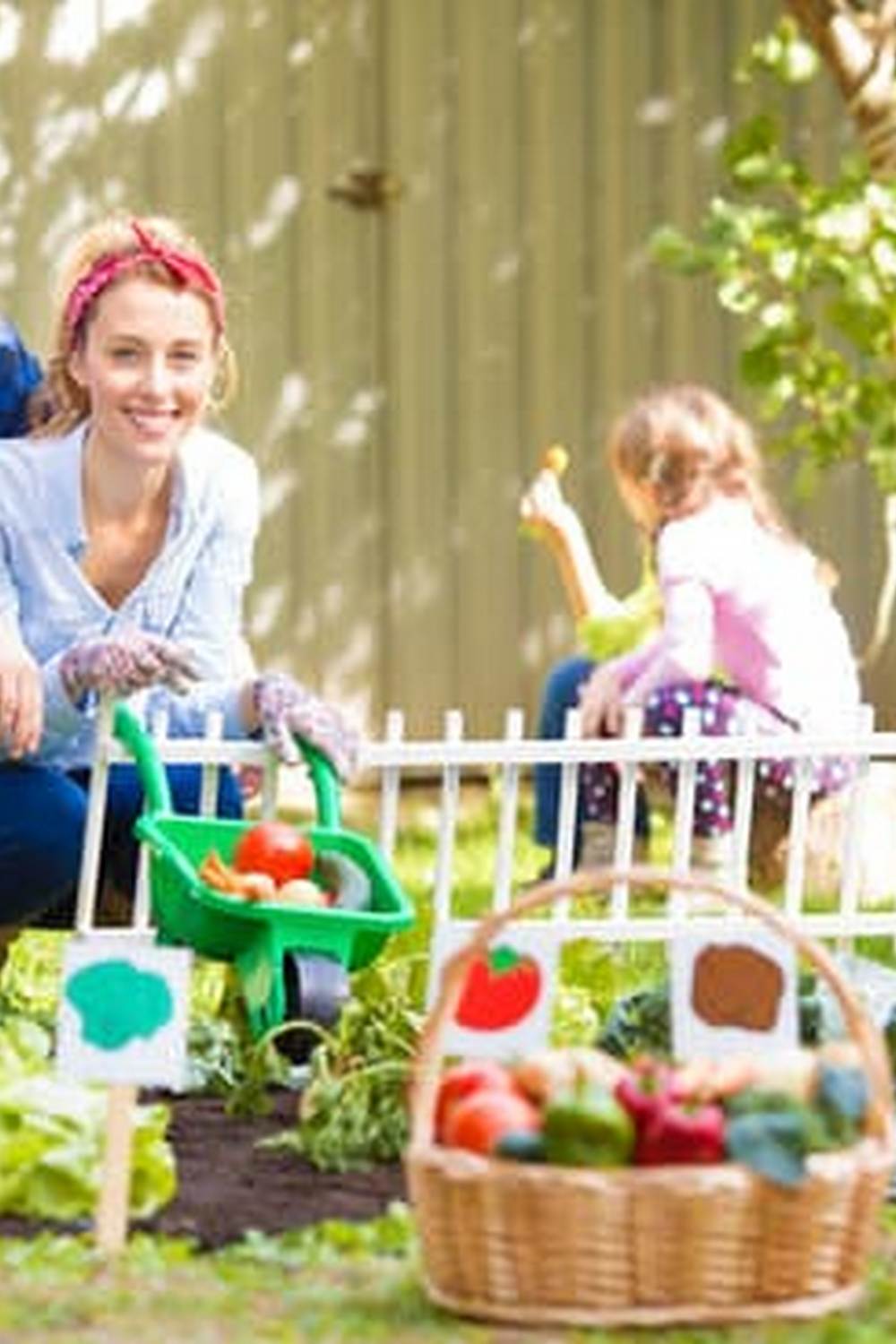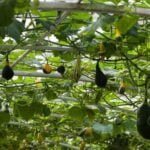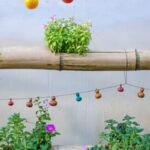As the end of the vegetable gardening season approaches, it’s a perfect time to reflect on the journey you’ve taken from the beginning of the season. From planting seeds to nurturing your plants, you’ve put in a lot of hard work and dedication to see your garden flourish. Now is an opportunity to assess the fruits of your labor and start preparing for the winter months ahead.
Looking back at how your garden started and how it has grown can be a rewarding experience. Remembering the excitement of seeing those first sprouts pushing their way through the soil or tasting your first homegrown tomato can give you a sense of accomplishment. Reflecting on the challenges you faced and how you overcame them can also provide valuable insights for future gardening endeavors.
As you evaluate the final harvest of your vegetable garden, take note of what worked well and what could be improved upon next year. Assessing which vegetables thrived in your garden and which struggled can help you make better choices for planning next year’s planting. Understanding your garden’s strengths and weaknesses is essential for maximizing its potential in the upcoming seasons.
Assessing the Final Harvest
As the end of the vegetable gardening season approaches, it is essential to take time to assess the final harvest and evaluate the success of your vegetable garden. Reflecting on the journey you have gone through from planting to harvesting can provide valuable insights for future seasons. Here are some tips for assessing your final harvest and determining how successful your efforts have been:
- Take inventory of the vegetables you were able to harvest throughout the season. Note which crops thrived and which ones did not perform as well as expected.
- Consider the overall yield of your garden. Did you produce enough to satisfy your household’s needs? Were there any excess vegetables that you were able to share with friends and family?
- Think about the quality of the produce you harvested. Were your vegetables flavorful and free from pests and diseases? Assessing the quality of your harvest can help identify areas for improvement in future gardening seasons.
Evaluating the success of your vegetable garden can also involve considering factors such as soil health, pest control measures, and overall garden maintenance. By taking a critical look at these aspects, you can learn from this season’s experiences and make adjustments for a more successful growing season in the future.
- Did you achieve your goals for this growing season? Reflect on what you set out to accomplish with your vegetable garden, whether it was to grow a wide variety of vegetables or focus on specific crops.
- Seek feedback from fellow gardeners or local gardening experts. Sharing experiences and insights with others can provide valuable perspectives on what went well in your garden and where there may be room for improvement.
- Keep a journal or log of your gardening activities throughout the season. Recording successes, challenges, and observations can serve as a helpful reference point when planning for next year’s vegetable garden.
By carefully assessing the final harvest of your vegetable garden, you can gain a deeper understanding of what worked well and where there is room for growth in future seasons. Use this time to reflect on your accomplishments, learn from any setbacks, and start planning for another successful year of vegetable gardening ahead.
Preparing for the Winter
As the end of the vegetable gardening season approaches, it is essential to start preparing your garden for the winter months ahead. Taking proactive steps now can help protect your garden from the harsh weather and ensure a successful start to next year’s growing season.
Clearing Out Debris
Before winter sets in, take the time to clear out any dead plants, weeds, and debris from your garden. This not only helps prevent pests and diseases from overwintering in your garden but also allows for a fresh start come spring. Consider composting healthy plant material to enrich your soil for next year.
Protecting Plants
For perennial plants or vegetables that can tolerate colder temperatures, consider adding a layer of mulch around their base to provide insulation. Cover fragile plants with row covers or cloches to shield them from frost and freezing temperatures. Additionally, consider moving potted plants indoors or into a greenhouse to protect them during the winter months.
Maintaining Structures
Make sure any trellises, supports, or fencing in your garden are sturdy and secure before winter arrives. Check for any damage that may have occurred during the growing season and make repairs as needed.
Proper maintenance of these structures ensures they will continue to support your plants next year. By taking these steps to prepare for winter now, you can safeguard your garden against harsh weather conditions and set yourself up for a successful start when the next growing season rolls around.
Cleaning Up the Garden
As the cooling temperatures and shorter days signal the end of the vegetable gardening season, it’s time to start preparing your garden for its winter slumber. Cleaning up your garden is an essential task to maintain its health and prepare it for a successful season next year. Here are some crucial steps to take before winter sets in.
Removing Dead Plants and Debris
One of the first tasks in cleaning up your garden is to remove any dead plants, weeds, or debris that have accumulated throughout the season. Dead plants can harbor diseases and pests that may affect next year’s crop if left unchecked. Be sure to compost healthy plant material and dispose of diseased or infested plants properly to prevent issues in the future.
Amending Soil
After removing dead plants, take the opportunity to assess the condition of your soil. Add organic matter like compost or mulch to replenish nutrients that were depleted during the growing season. This will help improve soil structure, water retention, and overall fertility, setting a solid foundation for your garden’s success next year.
Storing Garden Tools
Once you’ve cleaned up the garden beds, don’t forget about your tools. Clean and sharpen hand tools like pruners and shears, oil wooden handles to prevent cracking, and store them in a dry place for winter. This maintenance will ensure that your tools are ready for use when you start preparing for next year’s planting season. By taking these essential steps now, you’ll ensure a healthier and more productive garden when spring arrives once again.
Saving Seeds for Next Year
As the end of the vegetable gardening season approaches, it is essential to start thinking about saving seeds from your favorite vegetables to ensure a successful garden next year. By harvesting and storing seeds properly, you can preserve the characteristics of the plants that thrived in your garden this season. Here are some steps to help you save seeds for next year:
- Choose fully mature fruits and vegetables: Selecting the healthiest and most robust plants to save seeds from will increase the likelihood of successful germination next year.
- Harvest and clean the seeds: Remove the seeds from the fruits or vegetables and clean off any remaining pulp or debris. Allow the seeds to dry completely before storing them.
- Store seeds in a cool, dry place: To maintain seed viability, store them in airtight containers in a cool, dark, and dry location. Be sure to label each container with the type of seed and date harvested.
By following these simple steps, you can build a collection of seeds from your best-producing plants to use for next year’s garden. Saving seeds not only saves money but also allows you to continue growing varieties that have performed well in your specific growing conditions. Get started on saving seeds now so you’ll be ready when the next gardening season begins.
Remember that saving seeds is not only practical but also promotes self-sufficiency in your gardening endeavors. Additionally, by saving seeds from open-pollinated or heirloom varieties, you are helping preserve biodiversity in plant genetics.
As you collect and store seeds for next year, take note of any particular traits or characteristics that stood out in your garden this season. This information can guide your seed selection process for future planting and potentially lead to improved harvests in the years to come.
Preserving the Harvest
As we come to the end of the vegetable gardening season, it is essential to find ways to preserve and enjoy the fruits of our labor throughout the winter months. One creative idea is to make homemade jams or preserves using the excess produce from your garden. Whether it’s tomatoes, berries, or other fruits and vegetables, turning them into delicious jams can be a delightful way to savor your harvest when fresh produce becomes scarce.
Another fun and delicious way to preserve your garden’s bounty is by pickling vegetables. Cucumbers, carrots, peppers, and even green beans can be pickled to create tangy and crunchy snacks that will remind you of your summer garden. Plus, pickling is an excellent way to extend the shelf life of your vegetables and enjoy them throughout the colder months.
If you have an abundance of herbs in your garden at the end of the season, consider drying them for future use. Herbs like basil, oregano, thyme, and rosemary can be hung upside down in a warm and dry area to air dry.
Once dried, store them in airtight containers and use them in soups, stews, sauces, and roasts during the winter season. This will not only add flavor to your dishes but also provide a connection to your gardening journey well beyond the harvest season.
| Preservation Method | Examples |
|---|---|
| Jams/Preserves | Tomato jam, strawberry preserves |
| Pickling | Dill pickles, pickled carrots |
| Drying herbs | Basil, oregano, thyme |
Planning for Next Year
As we reach the end of the vegetable gardening season, it is essential to take the time to reflect on the journey we have embarked on since the beginning of the season. Looking back at how your garden started, the progress it made, and any challenges you faced along the way can provide valuable insights for planning next year’s garden.
Consider keeping a journal throughout the season to track observations, successes, and areas for improvement. This reflection exercise will help you make informed decisions when preparing for next year.
One key aspect of planning for next year is evaluating the success of your vegetable garden’s final harvest. Take note of which vegetables thrived and which ones did not perform as well. Consider factors such as sunlight exposure, soil quality, watering routines, and pest control measures.
By analyzing these aspects of your garden’s performance, you can better understand what worked well and what could be improved upon in the next growing season. This information will guide your decisions when selecting vegetables to plant next year and adjusting cultivation practices accordingly.
Furthermore, reflecting on this season’s outcomes will help you set goals and prioritize tasks when improving your garden for the upcoming year. Whether it involves expanding plant varieties, enhancing soil fertility through composting, implementing better pest management strategies, or optimizing watering schedules, having a clear plan in place can lead to a more successful gardening experience in the future.
By leveraging lessons learned from this season’s challenges and triumphs, you can create a more resilient and productive garden for the next growing season.
| Aspect | Importance |
|---|---|
| Evaluation of final harvest | Helps in understanding what worked well and areas for improvement |
| Setting goals based on reflections | Aids in prioritizing tasks to enhance the garden for next year |
| Learning from challenges and triumphs | Creates a more resilient and productive garden going forward |
Embracing the Downtime
As we approach the end of the vegetable gardening season, it is important to reflect on the journey that we embarked on when we first planted our seeds. Looking back at the beginning of the season, we can appreciate how much effort and care went into nurturing our plants from tiny sprouts to flourishing vegetables. Each stage of growth presented its own challenges and triumphs, teaching us valuable lessons about patience and persistence in gardening.
Now, as we assess the final harvest, it is a good time to evaluate the success of our vegetable garden. Did we achieve our goals for this season? Were there any unexpected surprises or disappointments? Taking note of what worked well and what could be improved upon will guide us in planning for next year’s garden. It is through reflection and assessment that we can learn and grow as gardeners.
As we prepare for winter and the end of the vegetable gardening season, there are steps we can take to protect our garden from the harsh weather ahead. Cleaning up the garden and storing seeds from our favorite vegetables will ensure a strong start for next year’s growing season.
Additionally, preserving the harvest through creative ways like canning or freezing will allow us to enjoy the fruits of our labor throughout the winter months. By embracing these tasks with a sense of purpose and dedication, we can stay connected to our love of gardening even during the off-season, eagerly anticipating the renewal that spring will bring.
Frequently Asked Questions
What to Do at End of Season With Vegetable Garden?
At the end of the season, it is essential to clean up your vegetable garden by removing any dead plants, weeds, and debris. It’s also a good idea to harvest any remaining vegetables before frost hits. Consider adding compost or mulch to nourish the soil for the next growing season.
When Should I Cut Down My Vegetable Garden?
Knowing when to cut down your vegetable garden depends on various factors such as the weather in your region, the type of crops you are growing, and your plans for the following year. Typically, it is suggested to remove spent plants after harvesting all vegetables and once they have died back naturally.
Should I Till My Vegetable Garden in the Fall?
Tilling your vegetable garden in the fall can be beneficial for preparing the soil for spring planting. However, it is crucial to consider whether tilling is necessary based on your garden’s specific needs. Over-tilling can disrupt beneficial organisms in the soil and lead to erosion issues.

If you’re looking to get into vegetable gardening, or are just looking for some tips on how to make your current garden better, then you’ve come to the right place! My name is Ethel and I have been gardening for years. In this blog, I’m going to share with you some of my best tips on how to create a successful vegetable garden.





